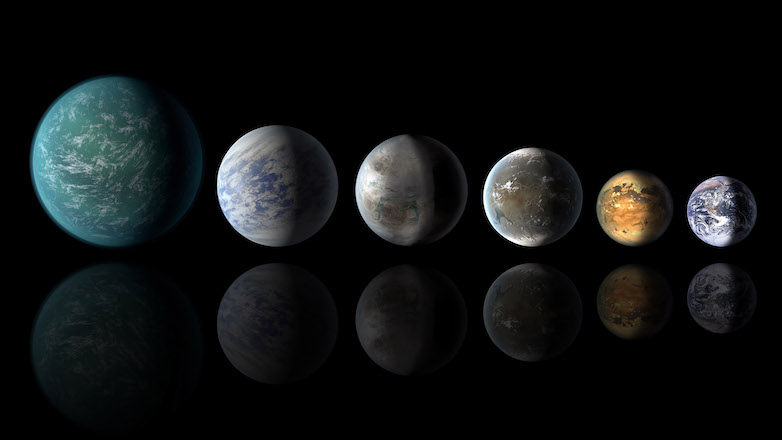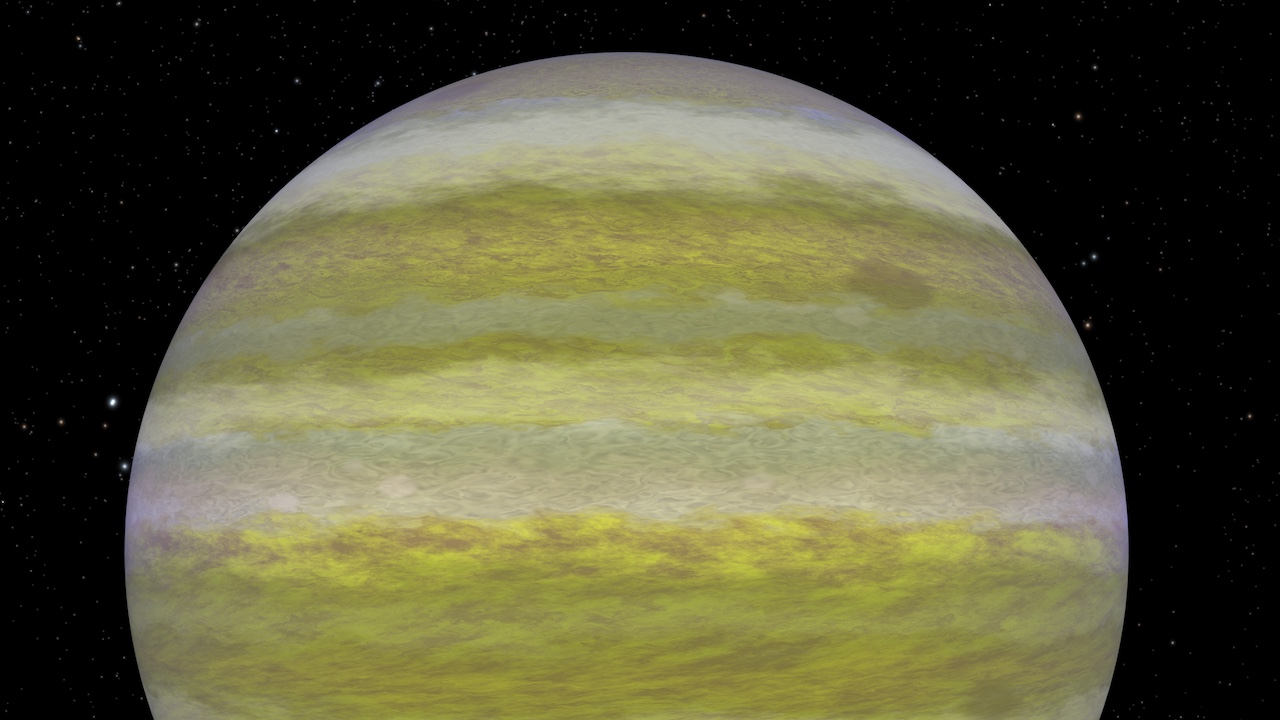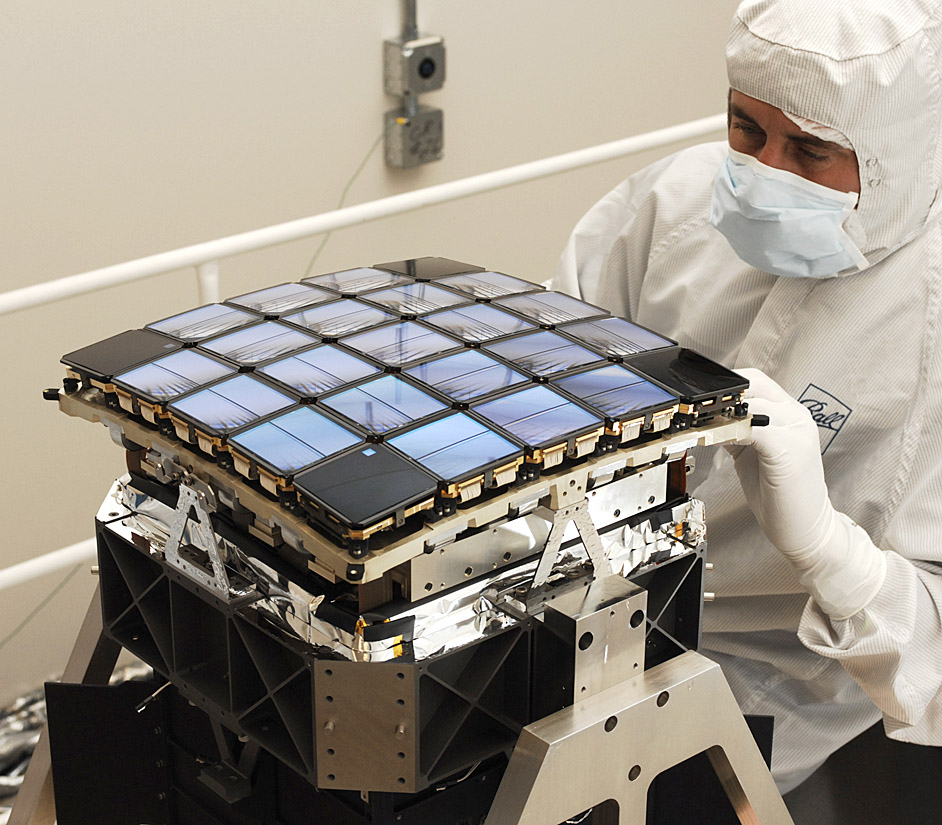9 min read
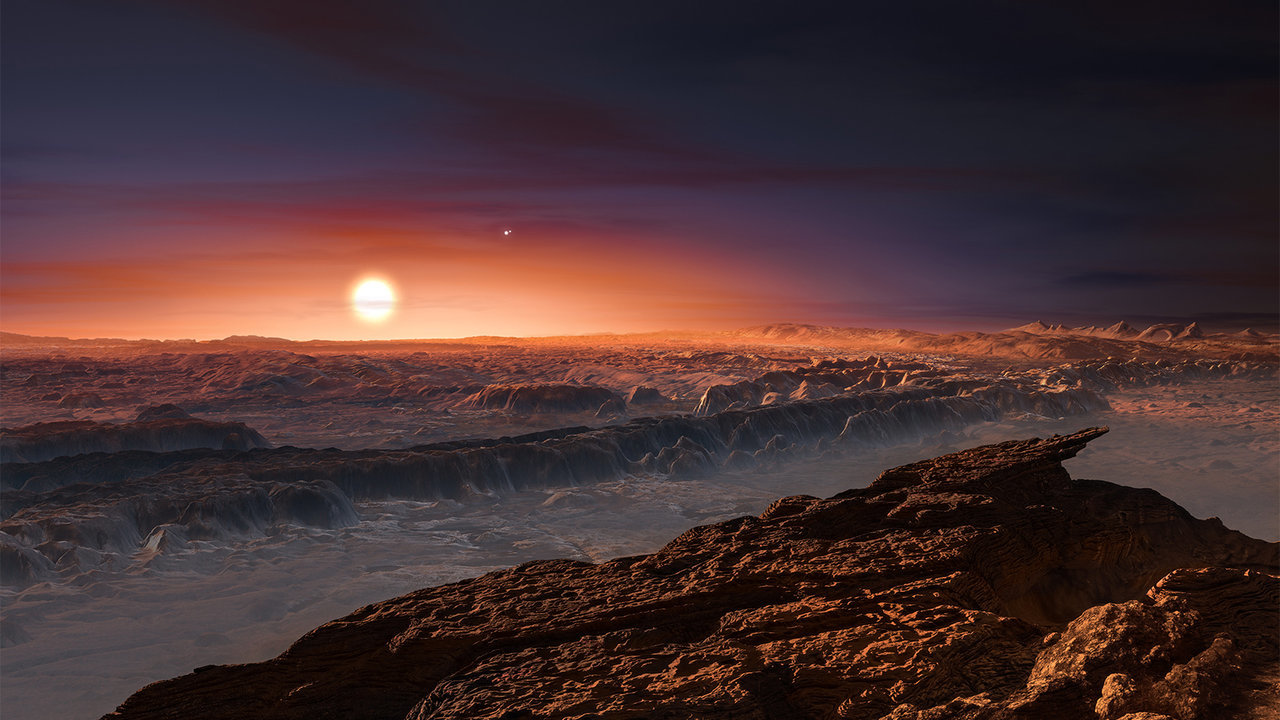
By Pat Brennan, NASA's Exoplanet Exploration Program
The main idea is easy to grasp: Set Goldilocks loose in our galaxy and let her choose a planet that’s “just right.”
For decades, the Goldilocks zone has been the go-to shorthand for scientists. More formally known as the “habitable zone,” it’s the region around a star where the temperature is just right for liquid water to pool on the surface of planets with suitable atmospheres.
The habitable zone, also known as the Goldilocks zone, is the region around a star where the temperature is just right for liquid water to pool on the surface of a planet.
As tens, then hundreds, then thousands of planets were confirmed to circle stars across the Milky Way, the question kept bubbling up: Might any of these worlds be capable of supporting some form of life?
And Goldilocks offered a glimmer of an answer. All earthly life requires liquid water; it seems reasonable that unearthly life would too. We are most likely to find life where we find liquid water – on planets in the habitable zone.
These days, however, researchers tell us it might not be that simple. While the traditional definition of the habitable zone is still a useful first approximation, the dizzying variety of planets and planetary systems – so far none that resemble our own – is prompting a wholesale re-evaluation of what it takes for a planet to be habitable.
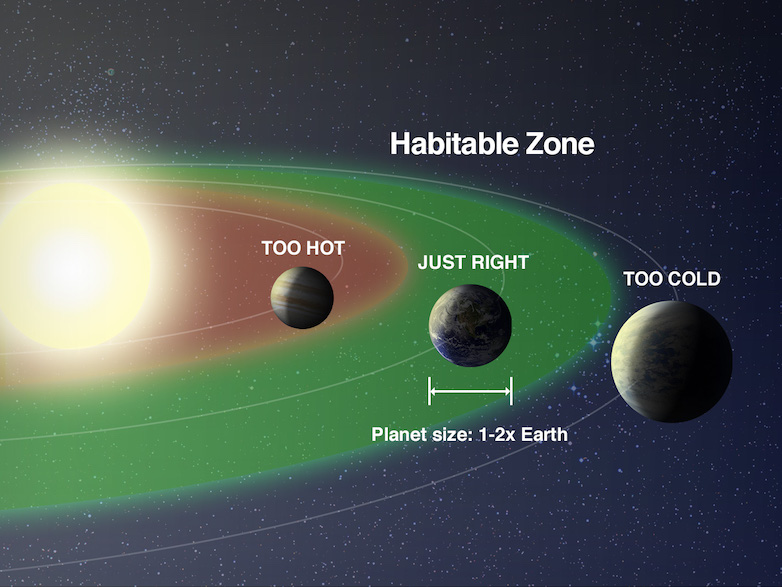
Might rogue planets hurtling through the galaxy, without a star but perhaps with their own internal heat, be habitable? Could Earth-sized planets locked in a close, habitable-zone orbit around a red dwarf star, and prone to sterilizing stellar flares, still harbor life? What about larger worlds that might resemble scaled-up versions of our home planet, and orbit in the habitable zone of their star?
Such depictions of potentially habitable worlds emerge from the bare bones data on actual planets – that is, once scientists apply their best conceptual ideas, plus a little computer modeling. But some of these worlds can play havoc with traditional ideas of habitable zones.
“It’s very important to realize, it’s not just the location,” said Mary Voytek, the senior scientist for astrobiology at NASA headquarters in Washington, D.C. “There are many other factors that contribute to establishing habitable conditions.”
Even well-known worlds close to home, in our own solar system, hint at far more variety than the chalk outline of the standard “habitable zone” suggests.
In our system, Venus by some measures grazes the inner edge of our Sun’s habitable zone, and Mars falls just inside the outer boundary. Neither appears to be habitable. Broiling, barbecued Venus with its sulfuric acid clouds is much too hot for life as we know it; freezing, desiccated Mars and its wisp of a carbon dioxide atmosphere is unpromising as well.
“The Moon is in the habitable zone in our solar system,” Voytek said. “Is it habitable? It can’t retain an atmosphere. It doesn’t have water on its surface. It’s something in the habitable zone that isn’t.”
Or cast the net much farther out, beyond our system’s “ice line.” Our biggest gas giants are both orbited by frozen moons concealing oceans beneath the surface. Jupiter’s Europa or Saturn’s Enceladus might also harbor some form of ocean-dwelling life – though well outside the traditional habitable zone around our Sun.
Do gas giants preside over their own habitable zones, in our solar system or around other stars? If so, it would be governed by tidal forces instead of radiant temperature – the push and pull of a moon’s innards by the gas giant’s gravity, causing tidal heating to keep subsurface oceans in a liquid state.
Open the lens a bit and pull back to take in a view of our entire, pinwheeling Milky Way galaxy. Might the galaxy also have its own habitable zone – the distance from the galactic center with enough metal to seed rocky planets, yet free of killer supernovae or smothering molecular clouds?
Such concepts are intriguing, and might one day contribute to the search for habitable worlds, but we don’t have enough data so far to make them useful for studies of exoplanets – planets around other stars.
So researchers are trying instead to narrow the focus and flesh out the potential habitability of the planets themselves. They are tasking our increasingly sophisticated computer models, originally designed to model Earth’s climate, with simulating exotic (if idealized) worlds instead.
“We’re using our understanding from Earth to inform our search for life, for habitability, on other planets,” said Nancy Kiang, an astrobiologist at NASA’s Goddard Institute for Space Studies in New York.
The extraordinary portraits these modelers paint are teaching us about previously unimagined possibilities – not only for potentially habitable worlds, but for the dynamic atmospheres of enormous, hot, gaseous planets, oddballs known as mini-Neptunes, or rocky, terrestrial planets locked in a deep freeze.
Modeling by several researchers, including Aomawa Shields of the University of California, Irvine, shows that small, rocky worlds orbiting red-dwarf stars – like the seven roughly Earth-sized planets orbiting TRAPPIST-1 – could, under some conditions, have stable climates and reduced susceptibility to deep-freeze.
Shields uses computer models to simulate the effects of host stars on their planets’ likely habitability. She says such findings suggest that the traditional habitable zone, by itself, is a limited way to define the potential habitability of these distant worlds.
“Our solar system is not the standard model,” Shields told an audience at a recent American Astronomical Society conference in Seattle. “It’s one of many possible configurations we’re seeing out there. Some push the boundaries of the traditional habitable zone.”
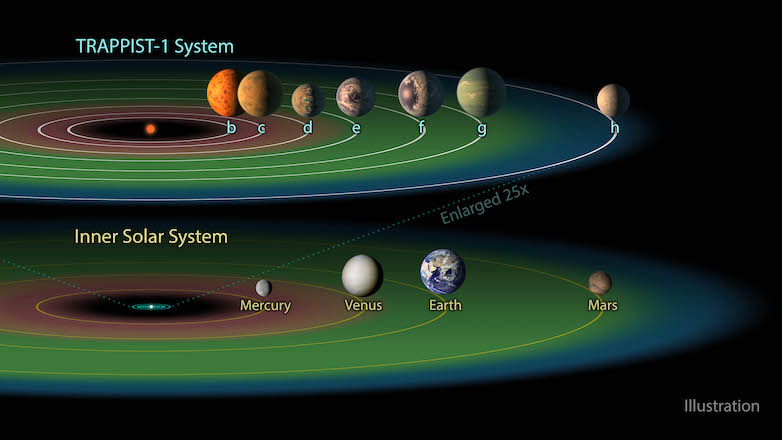
Astronomers say the habitable zone concept is mainly useful for targeting stars and the planets around them for closer study. That’s a big help in an era of explosive discovery of these distant planets, but one so far lacking enough telescopic power to read the atmospheres of smaller, rocky worlds for signs of habitability. Such telescopes are being designed with the help of ideas about the habitable zone. And new, more powerful instruments will be lofted into space in the years and decades to come, starting with the James Webb Space Telescope, expected to launch in 2021.
The Webb telescope might be able to scrutinize the atmospheres of large, mysterious worlds known as “super Earths” – larger than Earth but smaller than Neptune – and perhaps even planets in Earth’s size-range as well, though that would likely push the limits of the telescope’s capability.
“If something looks like a terrestrial planet within the habitable zone, what can we actually say about that?” asks Stephen Kane of the University of California, Riverside, who is also a member of the NASA Astrobiology Institute and who specializes in habitable zones. “The answer, at the moment, is very little.”
He calls the habitable zone “one of the most misunderstood concepts” in astronomy – and one that might one day pass out of use as our instruments grow sharp enough to reveal exoplanet characteristics in detail.
For now, however, it’s a key “target selection tool.”
“There are many candidates to choose from,” he said. “How do we prioritize our list? The answer is the habitable zone.”
And as we sail this sea of unfamiliar planets, we finally fetch up on the cosmic shoreline. The shoreline is metaphorical, but might be a very real statistical trend that links all planets – those in our solar system and the exoplanets around other stars.
It’s a dividing line that appears when we compare two factors: how much light a planet receives from its star, and how readily the planet’s atmosphere escapes into space.
An updated version of the “shoreline” was revealed in a 2017 paper by Kevin Zahnle of the NASA Ames Research Center in Moffett Field, California, and David Catling of the University of Washington Astrobiology Program.
They first considered the planets and moons of our own solar system, sketching out a standard graph like most of us drew in grade school. The vertical axis shows tick marks for solar radiation, increasing by factors of 10 in the upward direction. The horizontal axis shows the “escape velocity” that atmospheric particles must reach to leave the planet, increasing, in kilometers per second, to the right by a factor of 1,000.
And along the roughly diagonal line that cuts across the graph – the cosmic shoreline – were planets and moons with atmospheres. Add in the exoplanets with known masses and radii, and the number of dots near the line increases.
The line was where the solar radiation was low but escape velocity – really, a measure of gravity – was high. And sure enough, gathered on one side of the line like sunbathers on a summer beach were solar system bodies, planets and moons, known to have atmospheres: Earth, Venus, our gas giants Jupiter and Saturn, and even Saturn’s moon, Titan, with its atmosphere of cold, dense hydrocarbons.
Anything below the line was more likely to have an atmosphere. Anything above probably didn’t. And planets right on the line, or very close to it, might have thin atmospheres if any at all (think Mars, or Pluto).
Initial indications suggest that exoplanets also should divide reliably along this line – that is, if the relationship turns out to be real and not simply a statistical fluke.
“It’s certainly a testable hypothesis,” Zahnle said. “It would be kind of fun to know if this is actually a (physically based) general feature or just an accident of plotting two unlike things that coincidentally line up.”
As our space telescopes, in future years, gain the power to probe the atmospheres of exoplanets, and if the shoreline idea holds up, the relationship could become important – a way to choose among the menagerie of planets to find those most likely to possess atmospheres.
And Goldilocks, now confronted with thousands of planets to choose from, might more easily find a small, rocky, habitable world.
Just right.
